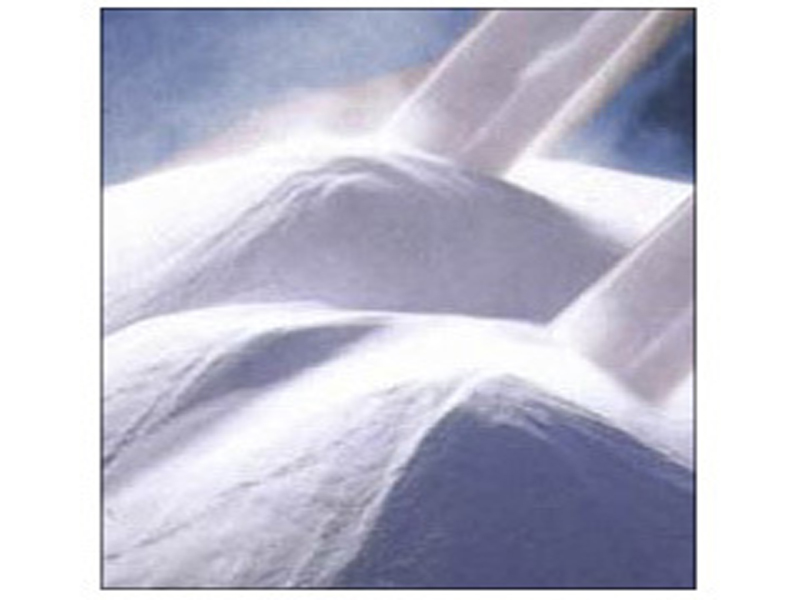- Water Treatment Chemicals
- Ferric Alum
- Polyelectrolyte
- Sodium Meta Bi Sulphite
- Sodium Bi Sulphite
- Sodium Sulphite
- Non Ferric Alum
- Soda Ash
- Sodium Bi Carbonate
- Ferric Chloride Anhydrous
- Ferric Chloride Liquid
- Common Salt
- Ethylene Diamine Tetra Acetic Acid
- EDTA Trisodium
- Sodium Hexa Meta Phosphate
- Tri Sodium Phosphate (TSP)
- Liquor Ammonia
- Cyclohexane
- Morpholine
- Sodium Hydroxide
- Water Softening Chemical
- Boric Acid
- Acetic Acid
- Boiler Chemicals
- Cooling Tower Chemicals
- Polyelectrolyte Anionic
- Polyelectrolyte Cationic
- Anionic Polyacrylamide PAM
- Cationic Polyacrylamide PAM
- Per chloro Ethylene
- Tri Chloro Ethylene
- Hydrated Lime
- Sulphuric Acid
- Hydrochloric Acid
- Hydrazine Hydrate 80%
- Sulphamic Acid
- Sulfamic Acid
- Ferrous Sulphate
- Poly Aluminium Chloride
Soda Ash
In Rewari

Soda ash has a tendency to absorb moisture from the atmosphere. The moist soda ash then starts absorbing atmospheric carbon dioxide. This phenomenon of absorption of moisture and carbon dioxide by soda ash is known as weathering. After weathering, soda ash is likely to contain appreciable moisture and sodium bicarbonate, but the total alkali content of the bag does not change. Soda ash has a tendency to cake when it comes in contact with moisture and, consequently, becomes lumpy.
Chemical formula : Na2CO3
Characteristics |
IS 251 : 1998 |
TCL-assured specifications |
Units |
|
Molecular weight |
|
106 |
|
|
Bulk density |
500 – 750 |
550 – 720 |
Kg/m3 |
|
Volatile matter content |
2 |
0.80 |
%, max |
|
Total alkalinity (as Na2CO3) |
98.5 |
99.0 |
%, min |
|
Sulphates (as Na2SO4) |
0.08 |
0.03 |
%, max |
|
Chlorides (as NaCl) |
1.0 |
0.80 |
%, max |
|
Iron |
By colorimetric method |
|
0.0029 |
%, max |
By spectrophotometric method |
0.007 |
0.002 |
||
Matter insoluble in water |
0.15 |
0.03 |
%, max |
|
Light soda ash is one of the most important basic industrial chemicals. Light soda ash is used to regulate pH in many chemical process streams. The superior buffering capacity of soda ash versus caustic soda offers advantages in adjusting plant wastewater pH ranges.
Soda ash is used as the sodium source for sodium sulfite/bi-sulfite pulping liquors used in the sulfite in Rewari, CMP, and CTMP processes, and in NSSC pulping.
It is also possible to replace a portion of the caustic soda in many pulp bleaching applications such as caustic extraction or hydrogen peroxide bleaching of mechanical or chemical pulps. However, the higher pH requirements of these applications may necessitate the continued use of some caustic soda.
It is also possible to replace a portion of the caustic soda in many pulp bleaching applications such as caustic extraction or hydrogen peroxide bleaching of mechanical or chemical pulps. However, the higher pH requirements of these applications may necessitate the continued use of some caustic soda.
In addition, it is the most widely used fixed alkali for the manufacture of other alkali products, sodium salts, glass, soap, sodium silicates, detergent, bicarbonates, bichromates, cellulose and rayon, iron and steel, aluminum, cleaning compounds, textiles and dyestuffs, drugs and many other materials. It is also used as an alkali for household purposes and as washing powder by laundries.